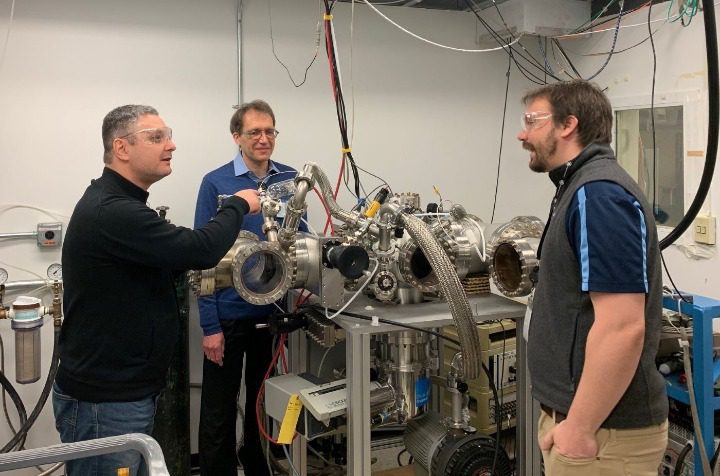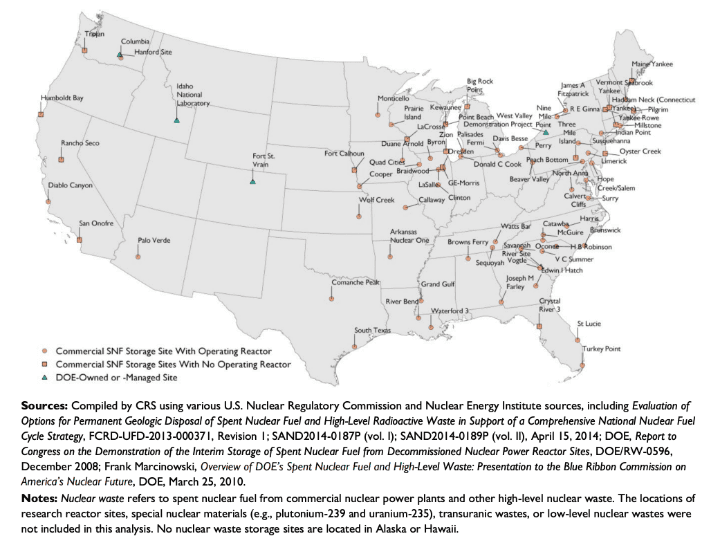DOE Funds New Program to Recycle Used Nuclear Fuel, GE Conducting Innovative Related Research
Credit to Author: Aaron Larson| Date: Thu, 17 Mar 2022 14:31:11 +0000

The U.S. Department of Energy (DOE) announced this week that it would provide up to $48 million for a new Advanced Research Projects Agency-Energy (ARPA-E) program that could substantially reduce the disposal impact of used nuclear fuel (UNF). The program, dubbed CURIE (Converting UNF Radioisotopes Into Energy), is intended to support “a comprehensive national strategy to deal with waste safely and securely,” the DOE said, and could help stimulate the deployment of advanced nuclear reactor technology by providing “safe and sustainable domestic fuel stocks.”
“CURIE will fuel advanced reactors and provide important clean energy elements, all while drastically reducing waste,” Dr. Jennifer Gerbi, acting director of ARPA-E, said in a statement. “With this new program, we’re emphasizing safeguards and lowered costs as we provide clean energy technology options for the future.”
CURIE seeks to develop innovative “separations, online monitoring, and materials accountancy technologies” that would support the domestic production of advanced reactor fuel feedstocks or important commercial radioisotopes and critical minerals, the DOE said. It also aims to support system design studies related to “fuel recycling, separations technologies with improved proliferation resistance, and minimization of waste volumes.”
GE’s RADMASS Technique
Also, this week, GE Research, GE’s subsidiary focused on research and innovation, announced that its team of scientists had been awarded $4.5 million through ARPA-E’s ONWARDS (Optimizing Nuclear Waste and Advanced Reactor Disposal Systems) program “to develop a new inspection technique that would encourage the recycling of fuel for advanced nuclear reactor concepts coming online.” GE’s technique—called RADMASS (Resonance Absorption Densitometry for Materials Assay Security Safeguard)—is intended to “help enable affordable ways to reprocess fuel with advanced nuclear reactor concepts.”
“One of the most exciting factors about the advanced nuclear reactor concepts coming online is the opportunity to optimize how the industry can recycle fuel in the future,” Dr. Andrew K. Hoffman, a materials research scientist at GE Research and principal investigator on the project, said in a statement. “Through ARPA-E’s ONWARDS program, GE Research and others will develop new solutions that make the re-processing of fuel a much more attractive and viable process for energy producers.”
The Used Nuclear Fuel Challenge
Currently, commercial nuclear power plants in the U.S. generally store UNF, also called spent nuclear fuel (SNF), onsite, awaiting disposal in a permanent repository. Figure 1 shows the locations of 80 sites in the U.S. where nuclear waste is currently stored. At 55 of the sites, 93 operating nuclear reactors continue to produce UNF while the units generate approximately one-fifth of the total annual electricity production for the U.S.

The U.S. generates about 2,000 metric tons of UNF each year, according to the DOE. In total, about 83,000 metrics tons of UNF has been produced since the 1950s. While that sounds like a lot, all of it could fit on a single football field at a depth of less than 10 yards. More than 90% of the fuel’s potential energy still remains in UNF, even after five years of operation in a reactor. While the U.S. does not currently recycle UNF, some foreign countries do, such as France.
The Nuclear Waste Policy Act of 1982 (NWPA) authorized the DOE to site a geologic repository for the permanent disposal of high-level radioactive waste. Congress amended the NWPA in 1987 to designate Yucca Mountain, Nevada, as the only location to be considered by DOE to construct a national high-level nuclear waste repository. Political and legal opposition to the project has delayed the licensing, construction, and operation of the proposed Yucca Mountain repository.
The NWPA authorized DOE to enter into agreements with nuclear utilities and other reactor owners to collect fees to pay for DOE’s disposal of the SNF. However, due to the delay in operation of a permanent repository, the federal government has paid at least $7.4 billion from the Judgment Fund to nuclear utilities and other reactor owners pursuant to court settlements and final judgments.
Recycling Could Help Reduce the Burden
The ARPA-E programs could lead to recycling options. The key will be developing technologies that can be commercialized to cost-effectively reuse the UNF. GE said one of the challenges is “in the probing or inspection of the fuel itself,” which GE’s RADMASS technology is designed to address. RADMASS is a non-destructive evaluation (NDE) technique that is expected to be able to accurately measure and characterize the material for reprocessing (Figure 2).

The end objective of GE’s ARPA-E project will be to demonstrate a proof of concept with its RADMASS technology in a non-radiation environment. The GE team will use photonics, and nuclear modeling and simulation, to show proof of concept for the ability of RADMASS to operate in a high radiation environment such as a nuclear fuel reprocessing hot cell (radiation containment chamber) facility, the company said.
The DOE said enabling the secure, economical recycling of UNF, by using UNF as new fuel for advanced reactors “would improve resource utilization and drastically reduce the volume of nuclear waste that requires permanent disposal. These technologies could also substantially reduce the heat load and radiotoxicity of waste requiring permanent disposal while providing a valuable and sustainable fuel feedstock for advanced fast reactors.”
—Aaron Larson is POWER’s executive editor (@AaronL_Power, @POWERmagazine).
The post DOE Funds New Program to Recycle Used Nuclear Fuel, GE Conducting Innovative Related Research appeared first on POWER Magazine.